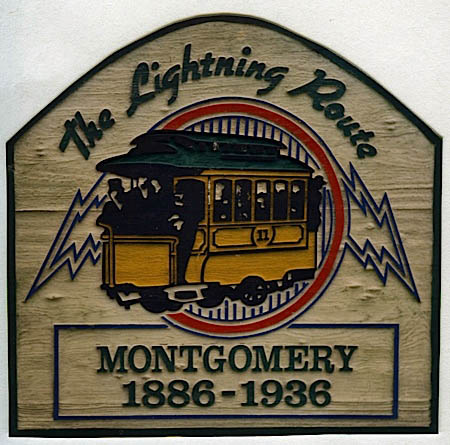
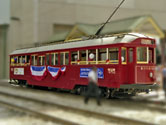




 Montgomery, Alabama
Montgomery, Alabama

 n 1886 the Capital City Railway Company began service in downtown Montgomery with America's first city wide Electric Trolley system. Soon to be known as the "Lightning Route," the system enjoyed and still does presently enjoy a great success. In 1936, after nearly fifty years of service, The Lightning Route was replaced by buses. The Lightning Route went back into operations by a private company in the 1980's and is fully operational today by the City of Montgomery.
The City of Montgomery purchased the Montgomery Area Transit System in 1974 and contracted the American Transit Corporation to operate the system.
n 1886 the Capital City Railway Company began service in downtown Montgomery with America's first city wide Electric Trolley system. Soon to be known as the "Lightning Route," the system enjoyed and still does presently enjoy a great success. In 1936, after nearly fifty years of service, The Lightning Route was replaced by buses. The Lightning Route went back into operations by a private company in the 1980's and is fully operational today by the City of Montgomery.
The City of Montgomery purchased the Montgomery Area Transit System in 1974 and contracted the American Transit Corporation to operate the system.

 or exactly 50 years, the city of Montgomery, Alabama operated a municipal streetcar system under the name Capitol City Street Railway Company.
Dubbed the "Lightning Route," this system was the first city-wide application of electric streetcars in the United States.
This early public transportation system made Montgomery one of the first cities to depopulate its central residential areas through transportation-facilitated suburban development.
Developed in 1886, the system operated until 1936 when it was replaced by municipal buses. A single Brill streetcar remains from the system, on display downtown in a park adjacent to the terminal railroad station.
or exactly 50 years, the city of Montgomery, Alabama operated a municipal streetcar system under the name Capitol City Street Railway Company.
Dubbed the "Lightning Route," this system was the first city-wide application of electric streetcars in the United States.
This early public transportation system made Montgomery one of the first cities to depopulate its central residential areas through transportation-facilitated suburban development.
Developed in 1886, the system operated until 1936 when it was replaced by municipal buses. A single Brill streetcar remains from the system, on display downtown in a park adjacent to the terminal railroad station.
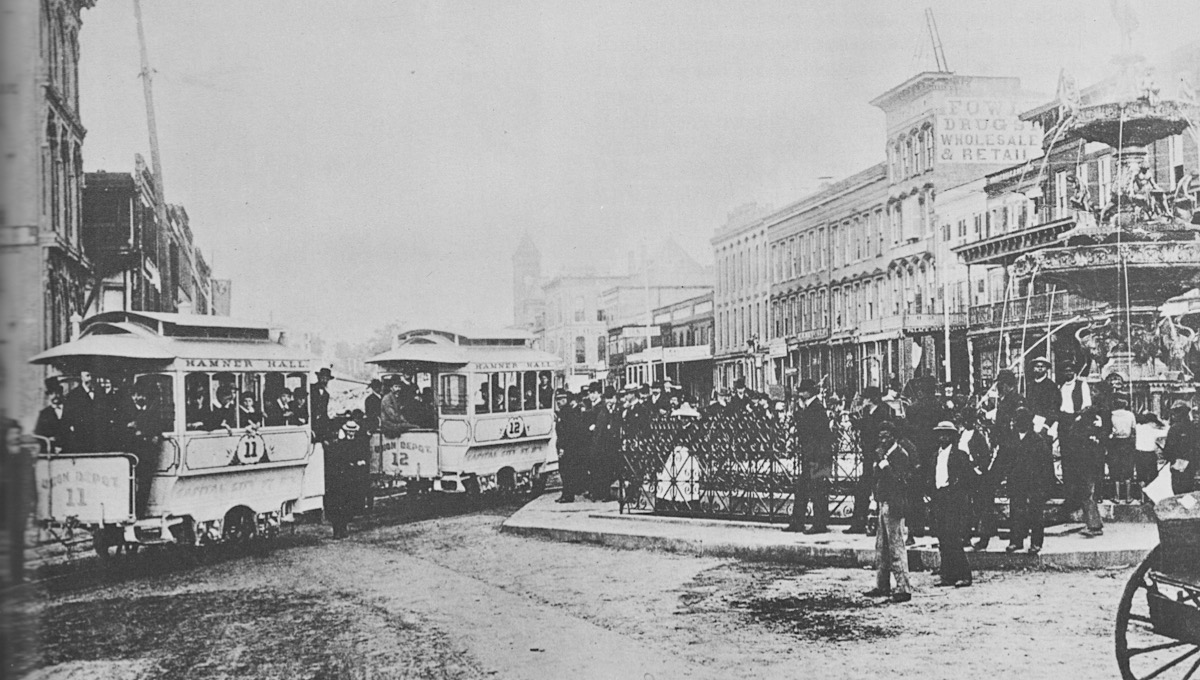
from The Time of the Trolley
/ collection

Proud citizens of Montgomery, Ala., flocked downtown to see the cars of the world's first all-electric street railway system. The 15-mile Van Depoele-equipped system, opened in 1886, brought electric railway close to the point of commercial success. Reassuring the citizenry, the Montgomery Advertiser said, "There is more real danger ... in a Texas mule's heels than in all the electric motor system."
William D. Middleton - The Time of the Trolley - Kalmbach, 1967
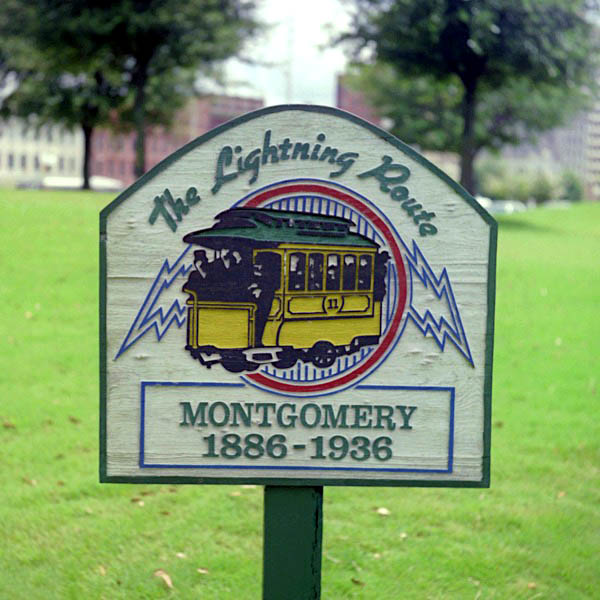
JCH
Brill #103

Click to see the streetcar pavilion plotted on a Google Maps page
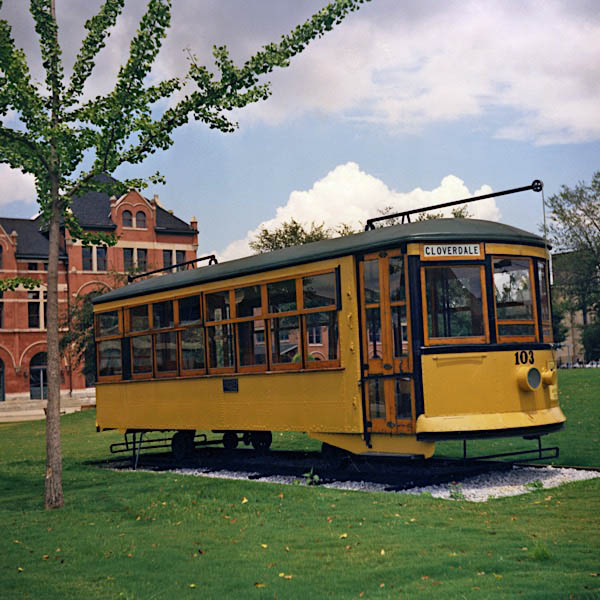
Montgomery #103
J. G. Brill one-truck / Montgomery, Al / JCH

Montgomery, Al / JCH
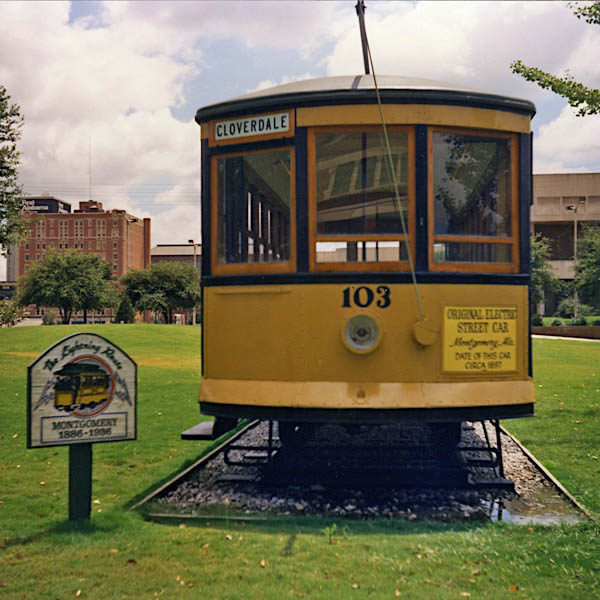
Montgomery, Al / JCH
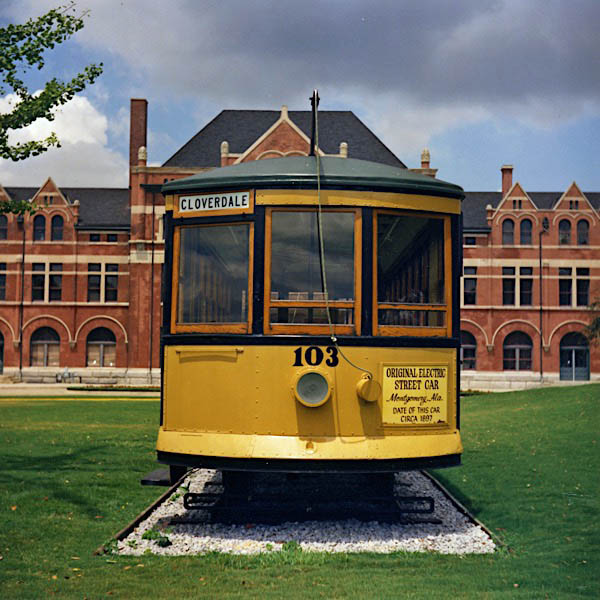
Montgomery, Al / JCH
 A Birney or Birney Safety Car is a type of streetcar that was manufactured in the United States in the 1910s and 1920s. The design was small and light and was intended to be an economical means of providing frequent service at a lower infrastructure and labor cost than conventional streetcars. Production of Birney cars lasted from 1915 until 1930, and more than 6,000 of the original, single-truck version were built. Several different manufacturers built Birney cars. The design was "the first mass-produced standard streetcar" in North America.
A Birney or Birney Safety Car is a type of streetcar that was manufactured in the United States in the 1910s and 1920s. The design was small and light and was intended to be an economical means of providing frequent service at a lower infrastructure and labor cost than conventional streetcars. Production of Birney cars lasted from 1915 until 1930, and more than 6,000 of the original, single-truck version were built. Several different manufacturers built Birney cars. The design was "the first mass-produced standard streetcar" in North America.
The Birney was designed to operate with only a motorman, saving the cost of the conductor. The advent of World War I made single-person operation additionally attractive as it addressed the wartime labor shortage. When labor was available, Birneys could be operated at more frequent intervals, prompting the slogan "A Car in Sight at all Times". This latter attraction was one of the street railway industry's first attempts to deal directly with automobile competition. The Birney Car also introduced the use of pneumatically balanced and interlocked doors. If a door was stuck open, or a passenger or other object blocked the door, the motors could not be started.
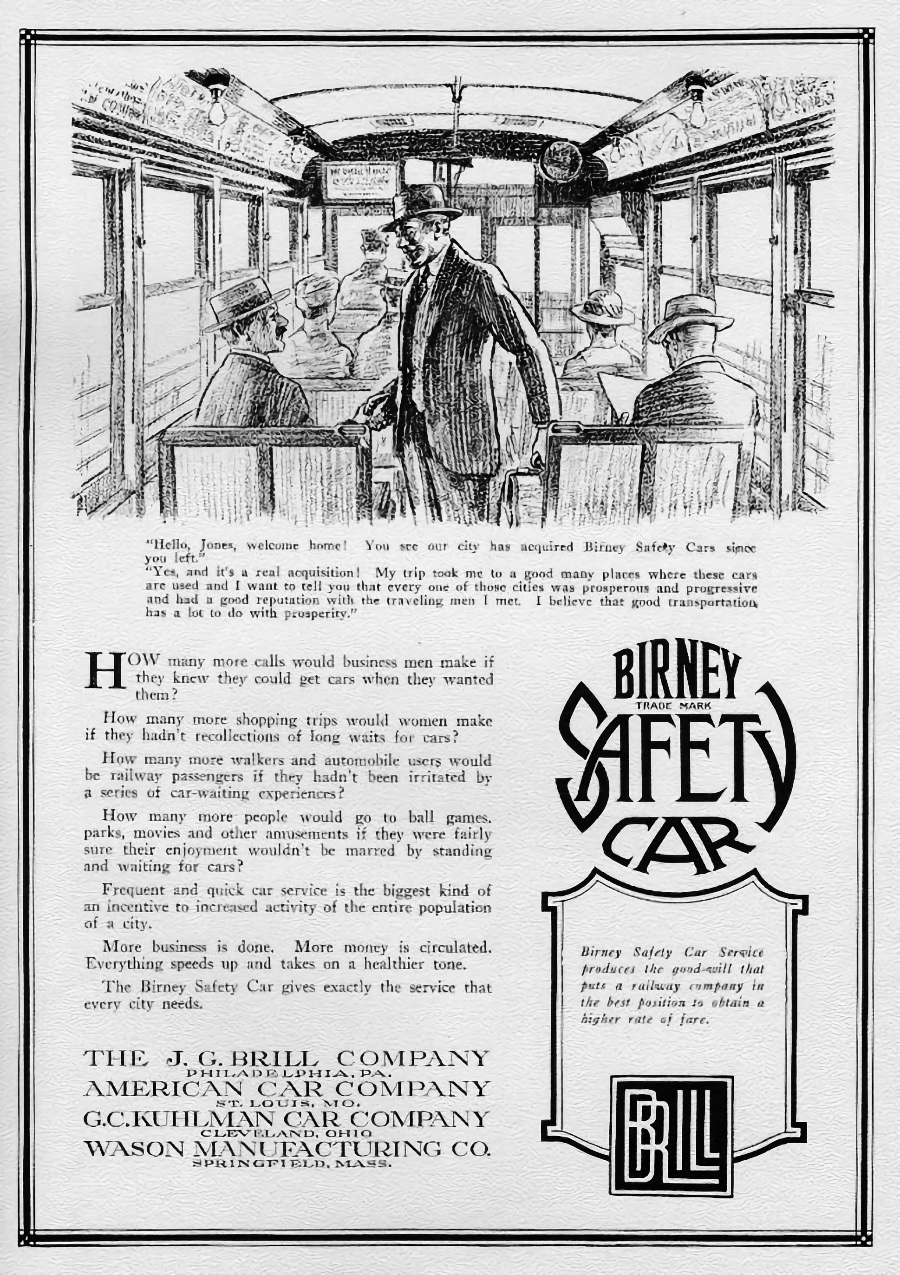
collection
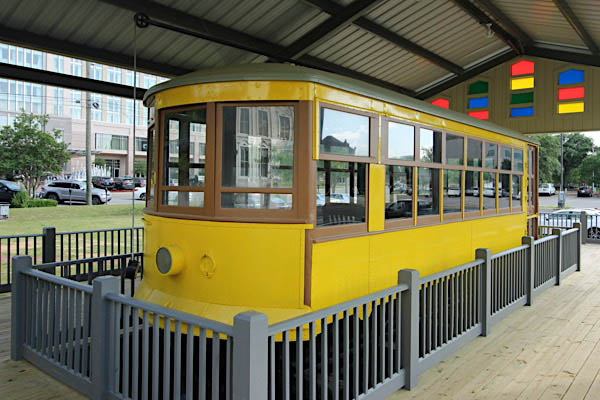
Montgomery, Al / May 2019 / RWH
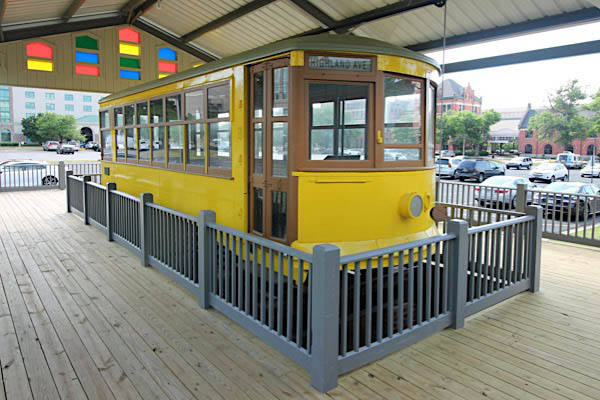
Montgomery, Al / May 2019 / RWH

Montgomery, Al / May 2019 / RWH
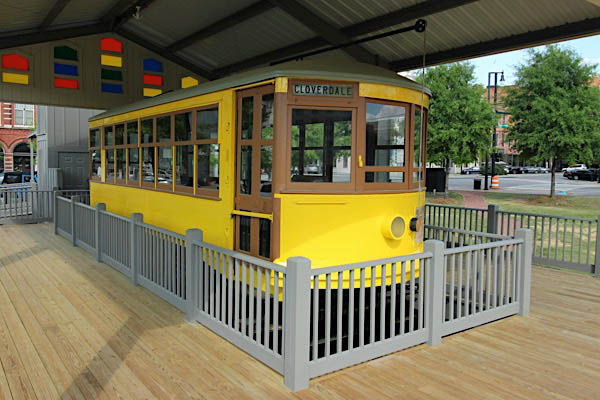
Montgomery, Al / May 2019 / RWH
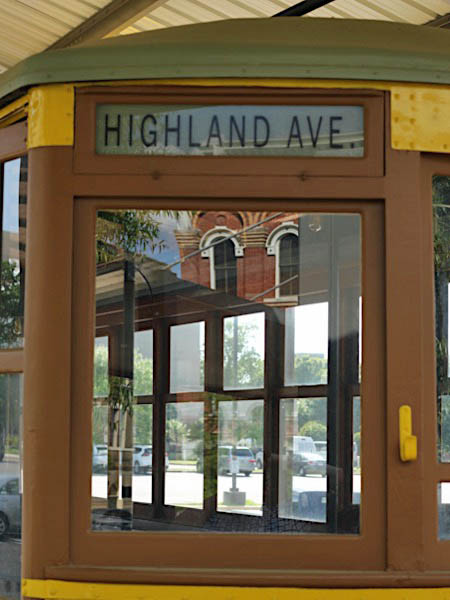
RWH


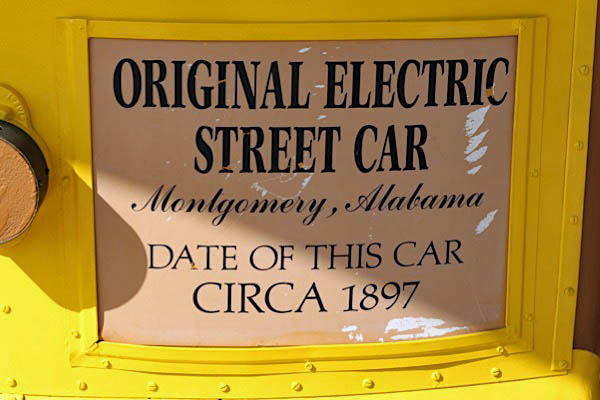
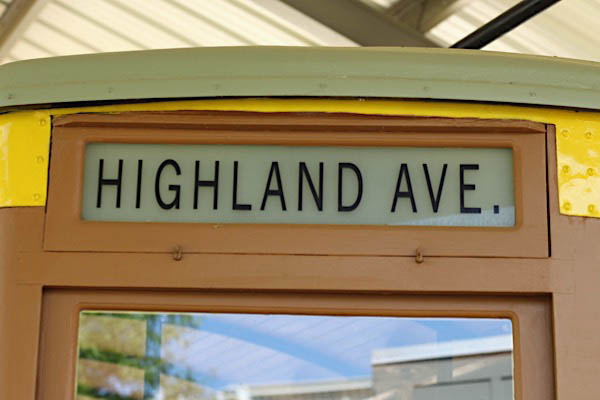
Montgomery, Al / May 2019 / RWH
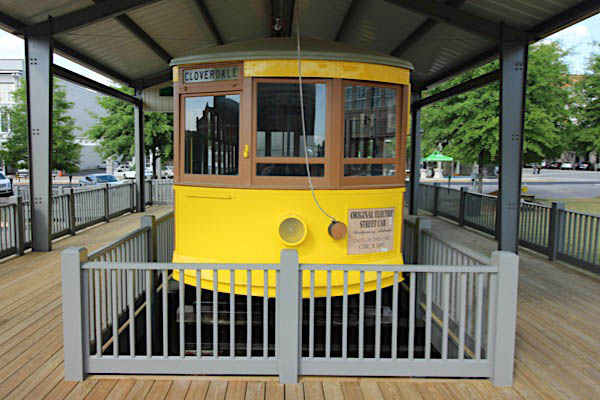
Montgomery, Al / May 2019 / RWH
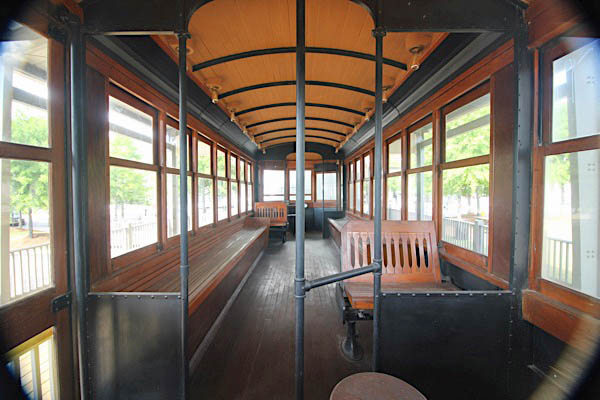
Montgomery, Al / May 2019 / RWH
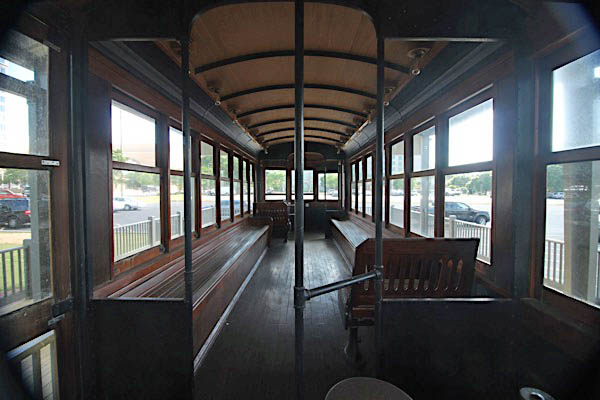
Montgomery, Al / May 2019 / RWH
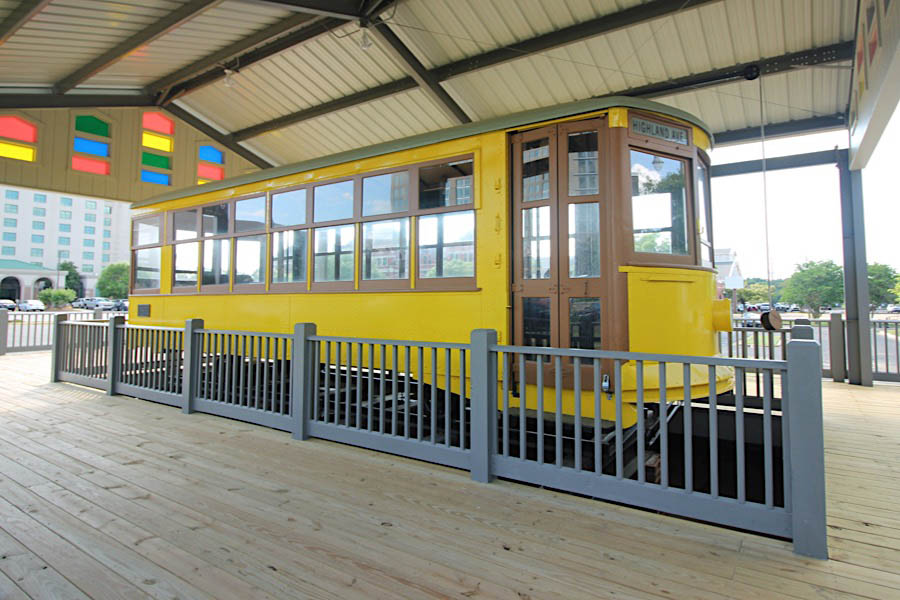
Montgomery, Al / May 2019 / RWH
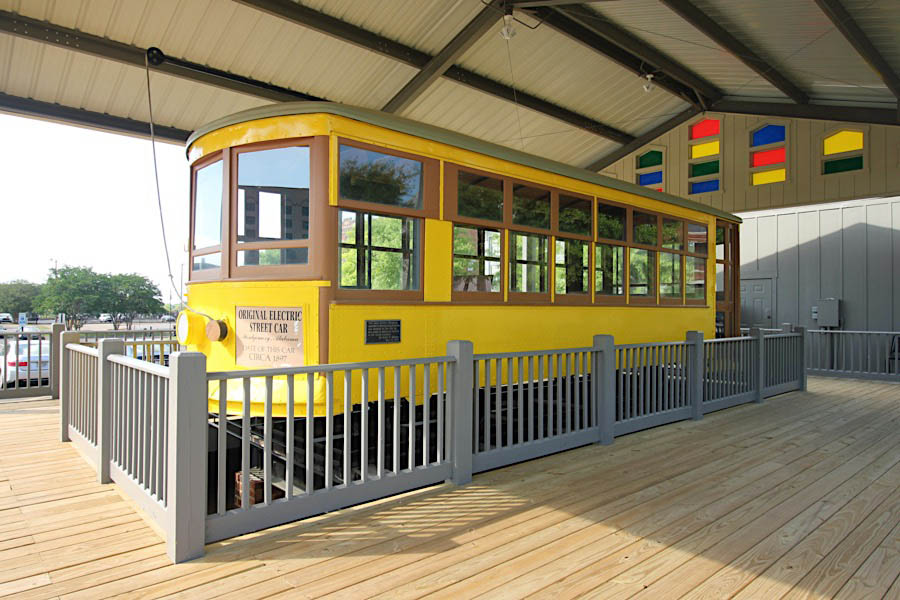
Montgomery, Al / May 2019 / RWH
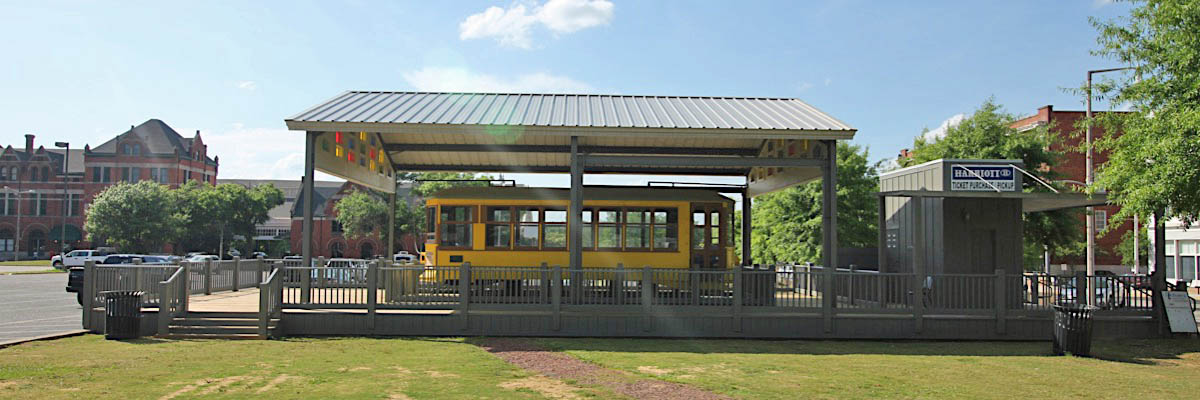
Montgomery, Al / May 2019 / RWH
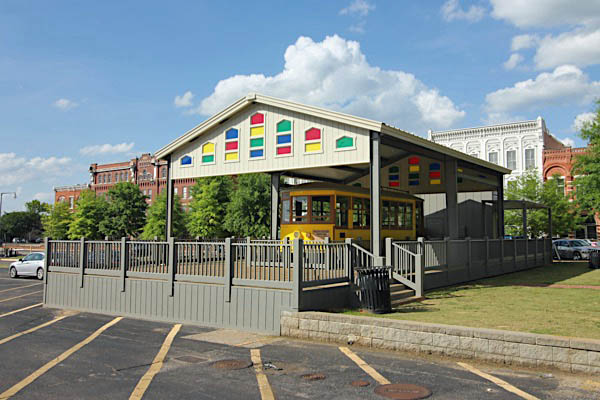
Montgomery, Al / May 2019 / RWH
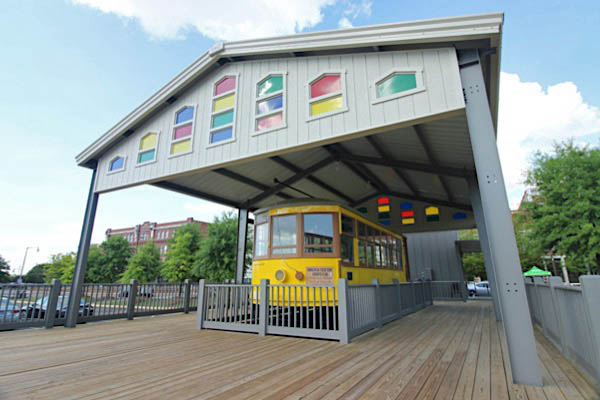
Montgomery, Al / May 2019 / RWH

Montgomery, Al / May 2019 / RWH
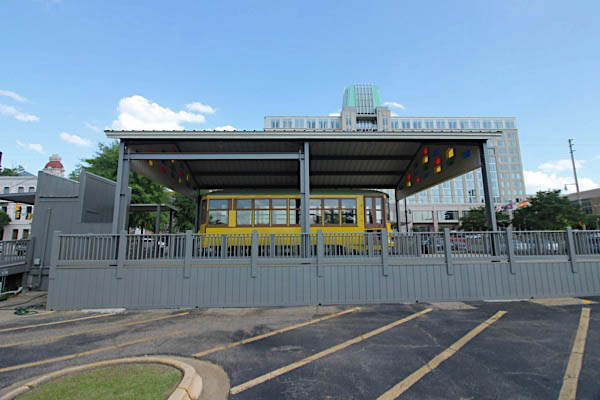
Montgomery, Al / May 2019 / RWH
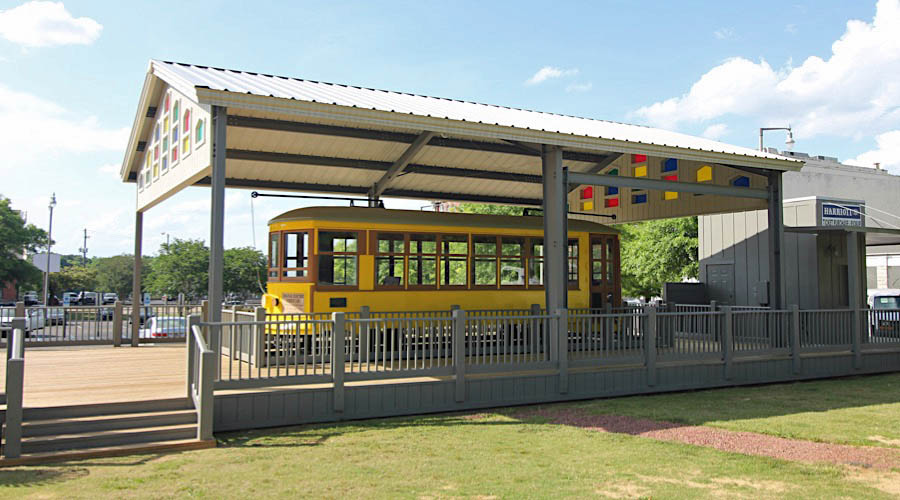
Montgomery, Al / May 2019 / RWH
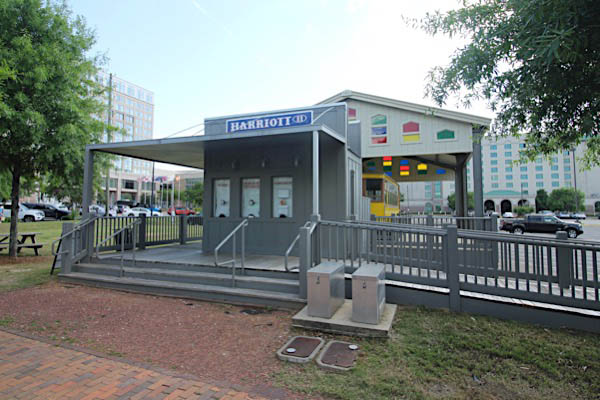
Montgomery, Al / May 2019 / RWH
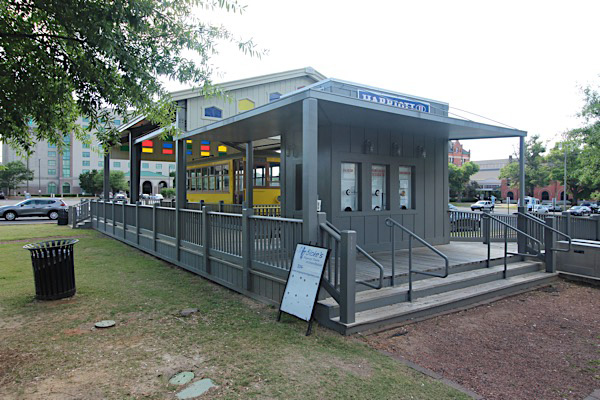
Montgomery, Al / May 2019 / RWH
 Scrapbook
Scrapbook
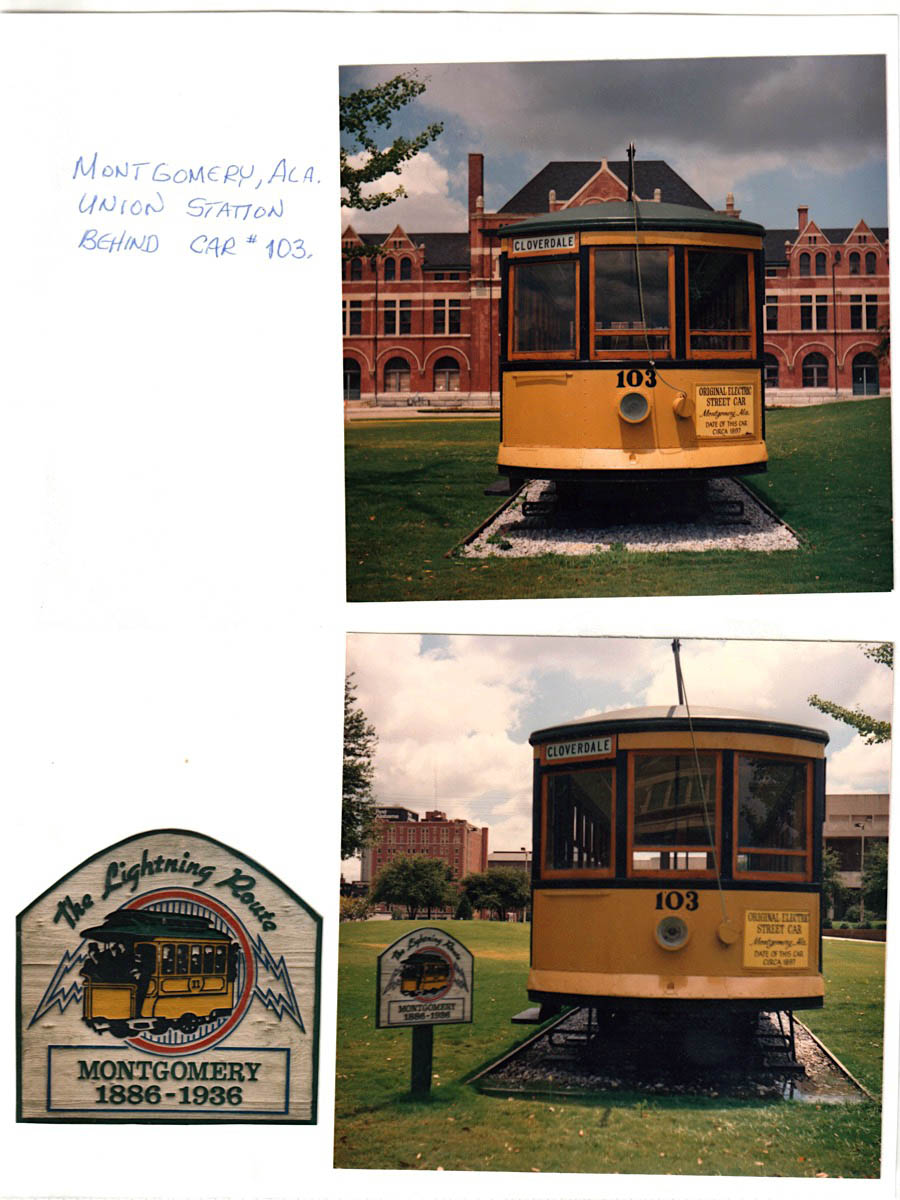
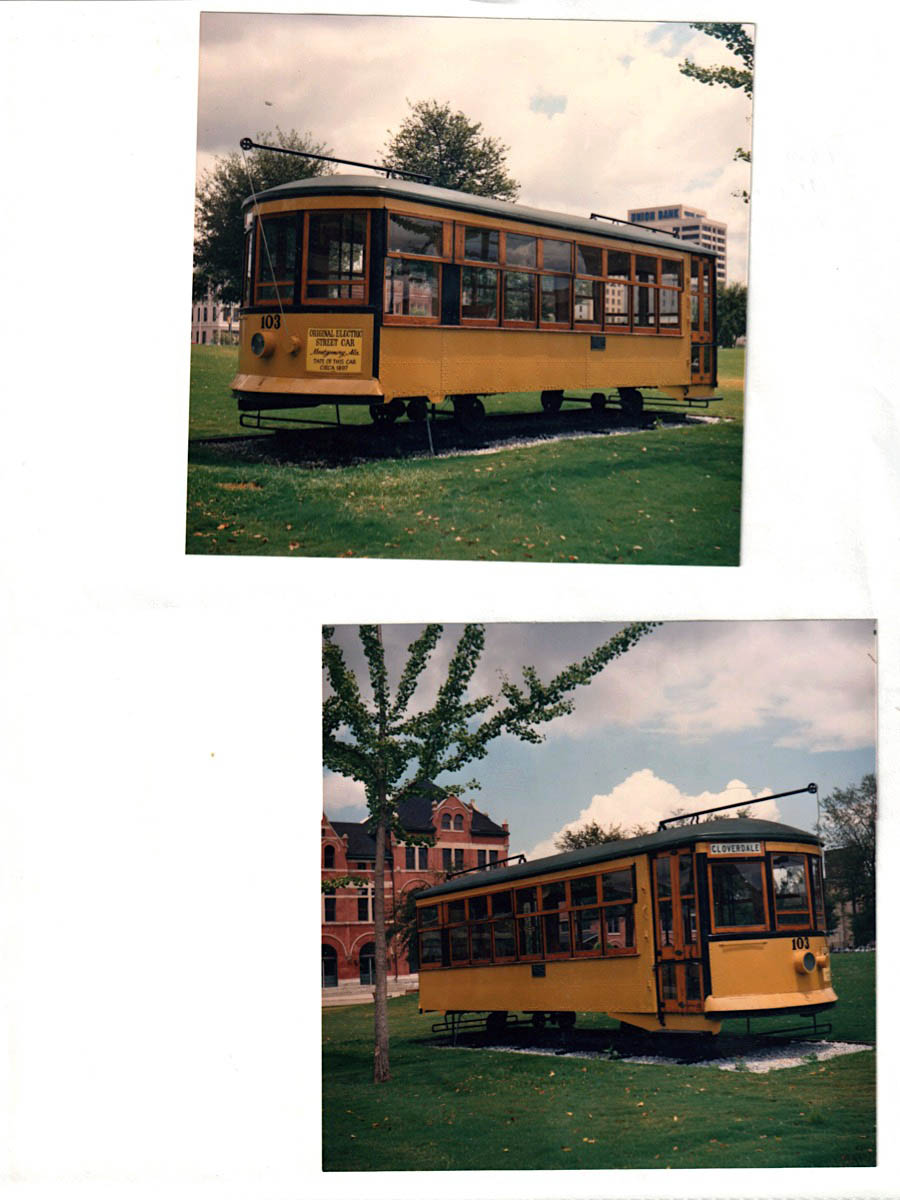
all pages from Montgomery Streetcar scrapbook / JCH
Links / Sources
- Montgomery Area Transit System
- Wikipedia article on "The Lightning Route"
- William D. Middleton, The Time of the Trolley (Kalmbach, 1967)
